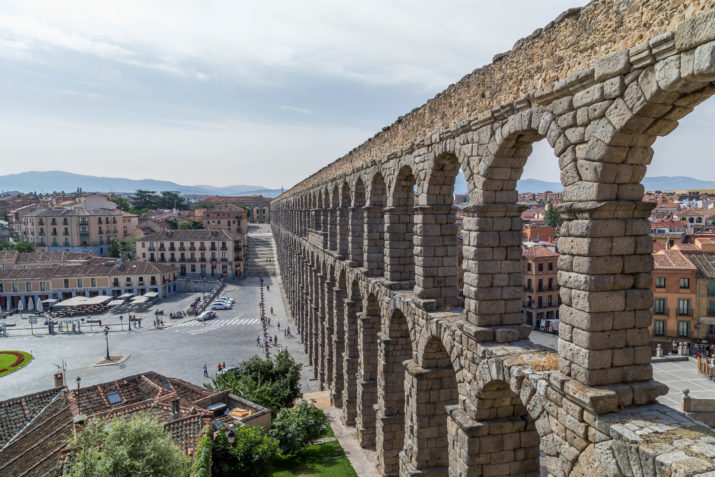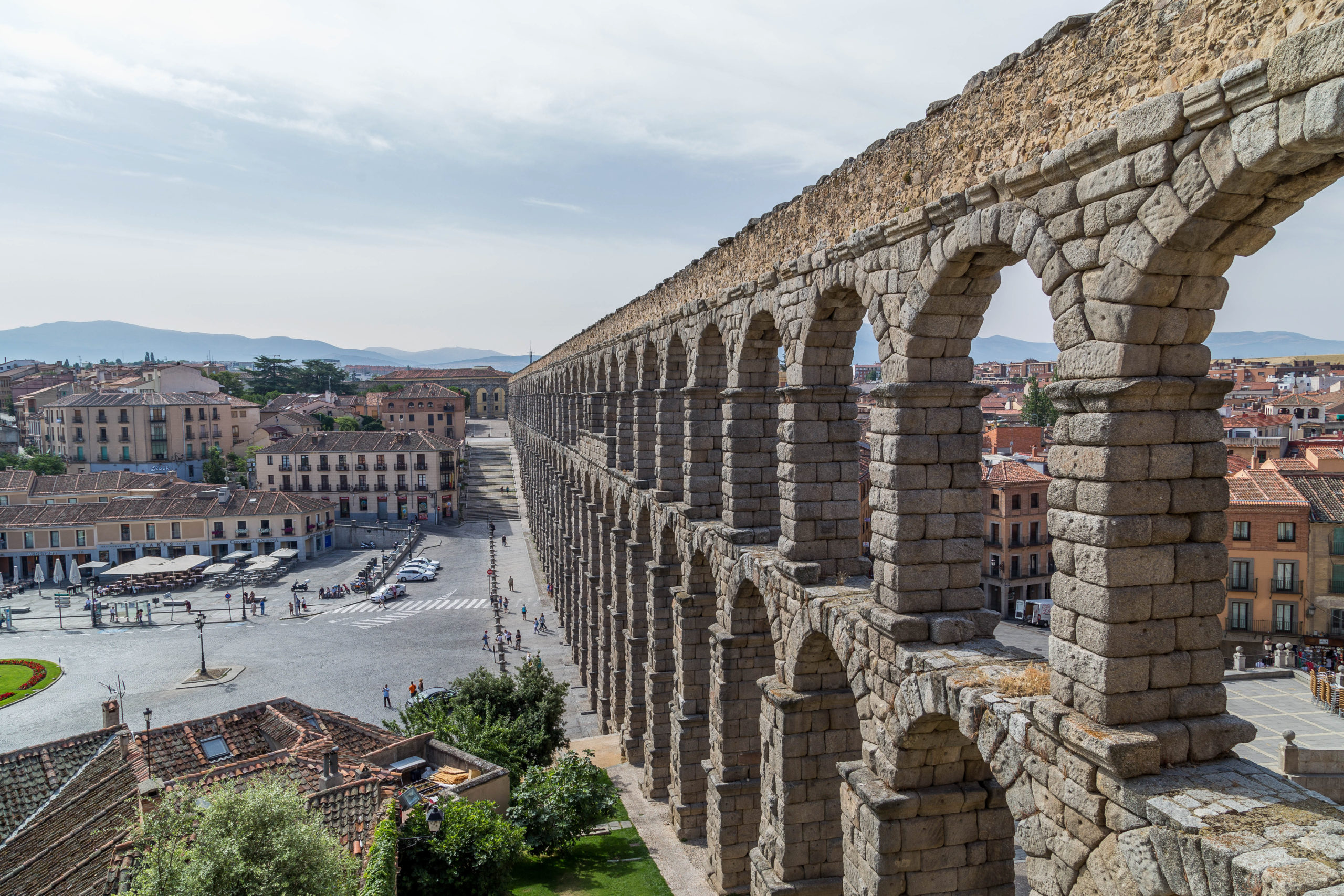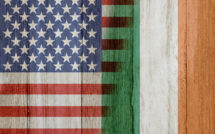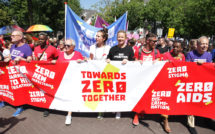

This is part of our special feature, Imagining, Thinking, and Teaching Europe.
Spain is empty. Villagers have left for city jobs. Former fields are now woodland, nature takes over abandoned homes, and wolves again grace areas they’d not toured for a century. A recent bestseller on the topic leads to a litter of articles and similar books.[1] Country people, in large numbers, start to protest their needs on urban streets. New, regional parties appear. National politicians begin to listen. Indeed, the present government could not form until the major party conceded to the demands of one deputy, the only representative of his regionalist party in parliament.
So, much activity; more words, some heated. A debate begins to roll. What crumbs can a social anthropologist bring to this roundtable?
A farewell to villages?
In his La España vacía (“Empty Spain”), one of the top ten books of 2016 in a popular vote, Sergio del Molino iterates the well-known fact that rural Spain emptied in the postwar decades as Franco oversaw the rise of industries in cities, and mass tourism along the coast (del Molino 2016). But then comes del Molino’s punch: the process continued through the democratic transition. Today, depopulation has reached such a pitch that a large triangular area in the northeast interior of the country has fewer people per square kilometer than Lappland, which is in the Arctic Circle, not the Mediterranean. Some villages have lost a further 35 percent of their inhabitants in just the last ten years.[2] This is not a simple conundrum in geography about jobs, soils, and population densities. It is a lived reality, an experiential process painful to most of those undergoing it.
In the late 1980s, I did long-term fieldwork in Old Quarter of Pamplona, then in the Navarran village of Cirauqui, a thirty-minute drive from the city (MacClancy 2000). Once an overcrowded village of 1,400 people, it had declined by then to about 400 and, when the weather turned, some of that redoubt retreated to the city. The older people I knew fully understood the job-seeking rationale for rural emigration. That did not silence their laments of loss, which they couched above all in social and sensorial terms. There were no more snorting horses, no steaming cow-pats to avoid. The streets no longer bustled. People had to seek company, not stumble upon it. The annual slaughter of a household’s pig or the shrill panpipes of the itinerant knife-sharpener were verging on the patently folkloric even to them. Come the winter, they said, the village could feel “dead.” It was too quiet, lacking life.
The regional press chimed the same threnodic tone. Among other losses, journalists lamented the death in a northern Navarran valley of the last traditional “matchmaker,” or the demise of the last speaker of the Roncalese dialect of Basque. Imagine being the terminal speaker of a language, with no respondents but the looking glass.
Of neo-hippies, and other re-populators
And yet, all is not decay, loss, decline. There were counter-trends, even in the 1980s. While living in Pamplona, at weekends I’d go visit neo-hippy friends who had repopulated Ulí Alto, an abandoned hamlet in the foothills of the Pyrenees, a forty-minute walk off the valley’s only road. Half-a-mile up the road from them and a thirty-minute trek up the hill on the valley’s other side was Lakabe, a well-established and exemplary commune with a Europe-wide reputation. The next village up the road from that had been turned into a rehabilitation-through-endeavor camp for Navarran junkies trying to kick the habit. And the village after that operated as a Buddhist center for disenchanted urbanites fleeing the grime and unemployment of Bilbao, once a European center of heavy industry, but by then rusting badly. In other words, the whole valley, hamlet by hamlet, was being taken over by counterculturals of many different hues.
This change was as deep as the winters were chilling. For what the emigrating locals had damned as a dispiriting life of rural drudgery, their youthful replacements saw as a reanimating opportunity, where the existential returns outweighed the quotidian demands. Many did eventually return to the city, but some stayed, and were joined by yet more. Today, Ulí Alto continues; Lakabe still receives volunteers; a series of other hamlets have also been occupied. These moves have not been welcomed or understood by all. In the late 1980s, there was at least one attempt to burn down Lakabe. In the 2000s, a right-wing President of the Navarran Deputation tried to have the new inhabitants of several re-settlements evicted.[3]
In many areas of empty Spain, the repopulators are much more varied than huddles of neo-hippies bent on creating their moneyless utopia. Let me take a comparative example: in the 1960s and 1970s in the West of Ireland, the first wave of incomers were back-to-nature visionaries. Within a decade or so they were followed by people the pioneers dismiss as “suburbanites,” i.e. pragmatic ex-urbanites who wish to enjoy rurality without forsaking modern benefits (MacClancy 2015a). And, thanks to tele-cottaging via the Internet, they can also hold down jobs, ones not tied to rural place.
In empty Spain, much the same kind of evolution has taken place. Today one can find new residents spanning a kaleidoscopic spectrum from deep green activists to the self-employed but sharp-eyed, reliant on a good connection to the virtual economy. Some form intentional communities, whether religious, political, or ecologist. But most immigrants are individuals or families. A few Middle Eastern refugees, skilled in other trades, turn to farm labor or shepherding local flocks. The job might be humble, but their new place of residence offers their children a chance of a Western education and thus an insurance for their own old age. In the southeastern province of Alicante, where I now do most of my fieldwork, North Europeans not attracted by the “costas”―the coastal stretches ill-famed for over-busy streets of disco blare and heavy drinking―renovate, then inhabit old houses in tranquil villages, chosen for their proximity to an international airport and good hospitals. In the municipality I study, my neighbors include impoverished writers, artists, yoga teachers, and semi-retired businesspeople who periodically commute back to the UK. Their diversity is great, but all are in search of a high quality of life at low cost. They can be classed as much unwitting economic opportunists as lifestyle migrants.
Down with “emptiness”
The Latvian anthropologist and Oxford don, Dace Dzenowska, has written of her rural homeland where the remaining locals speak of their present plight as being stuck in “emptiness,” an ontological category of in-betweenness: between the twinned failures of Soviet communism and post-Soviet capitalist “restructuring,” and an indeterminate, yet expected “future,” whose nature they cannot control. Villages empty of all but the elderly, while regional planners strive to propose grand strategies to revive, or renovate their depopulated countryside (Dzenowska 2018).
Her analysis, though very incisive, enlightens but does not translate easily into the Spanish case. Some commentators soon criticized “empty Spain” as too static, free of human interventions occurring in historical time. They argued we should talk of a process rather than a state: less “emptiness,” more “emptying,” and that coupled with a new “filling;” less “depopulation,” more “depopulating,” and that counterbalanced by attempts at “repopulating.” A further advantage is that while nouns, however abstract, can tend towards reification, present participles are more clearly relational categories, stressing historically contingent, agentive processes over states, which can all too easily seem quasi-permanent, static. In the words of one journalist: “Empty Spain does not exist, it is emptied Spain” (Lenoir 2020).[4]
I don’t wish to bind Dzenowska into unwanted binaries, though her case-study does come across as one of isolated pensioners enduring the changes around them, and city-based civil servants with broad designs and undeveloped empathy. For the Spanish case, I wish to stress the rich diversity and variegated nature of revitalizing initiatives, at all levels, from the village to the region and beyond.
These days, national and regional newspapers pepper their pages with the latest idea to boost employment, profit, or liveliness in their rural hinterland. Regional leaders call for greater connectivity. They mount fairs to bring together urban entrepreneurs and locals eager to try unforeseen initiatives. Some town councils offer whole abandoned hamlets within their municipality to the bidder with the strongest promise of economic revitalization. Others plug for ecotourism, converting the return of wolves from a threat to flocks into a job-creation scheme. Emplaced producers of locally crafted foods or objects strive to reach extra-local markets by selling online, with their source and style of origin as logic for added value. An energetic mayor, managing a village overfilled with ageing bachelors, may organize a “caravan” of urban women open to the idea of stability via marriage to a local male with at least enough resources on which to survive. Urban au pairs from the USA or New Zealand come to teach English to children and leave enchanted by acquaintance with another way of life.[5] And so on.
Some of these efforts may appear token or geographically very contained. Whether they succeed or not, they are all evidence of the desire to act, the realized wish to restrain or re-direct external forces. And who is measuring success here?
Sustaining the nation
There is at least one area of Spain where the revival of the rural economy has been profound, long-lasting, and deeply controversial. In parts of Almería, a province in the southeast, hectares of polytunnels cover the landscape, creating a carefully regulated environment for well-irrigated crops of high value. Thousands of North Africans, many without legal status, tend the labor-intensive crops; local landowners, now well-to-do farmer-managers, pick up the profits. This systemic exploitation led to protests, followed by openly racist reaction, and the beginnings of a national debate (Martínez Veiga 2001). If the Spanish countryside is to be repopulated and its economy re-thought, then questions of capital distribution suddenly loom very large. A renovated rural Spain needs to be sustainable, both biologically and socio-politically.
The anthropologist Jaro Stacul has written of political parties appropriating “the countryside” as a nationalist issue in northern Italy. Here villagers’ concerns about maintaining their way of life dovetail with party desires to boost a certain vision of Italian unity, as much geographical as ideological (Stacul 2015). This public exploitation of a nationalist agenda for partisan ends has not yet surfaced in Spain. Today, patent care for the countryside may be competitively championed by all major parties on the left and the right. But there is only a weak, albeit irreducible nationalistic dimension to this debate.
Nature might abhor a vacuum, but it seems nations hate emptiness almost as much. La España vacíada is seen, implicitly, as a bad thing, though no one has stated exactly why. The reasons usually hinted at amount to little: a generalized nostalgia for all that Spaniards once had, as though memory of pre-industrial days enabled a now-valued innocence. That large and increasing areas of land have lost almost all their inhabitants is, it is assumed, a generally agreed negative, as though the people of a nation believe the extent of its territory should be occupied. The fact, pointed out by del Molino, that rural populations have been remarkably low for centuries, is quietly passed over. There is also a sense—I cannot yet be more specific—that allowing nature to regain control over what generations had laboriously won is an all-too public denial of centuries of civilizing efforts, a denigration of their forefathers’ noble, time-honored endeavors. I am speculating here: it is a subject I am researching right now. I’ve been an academic Hispanophile for over thirty years and still read at least two Spanish newspapers almost every day, and even though no one to my knowledge has stated any of the above in print, it all lies just below the verbal surface: an unexpressed logic providing a rationale for actions whose justification is otherwise simply accepted, without question, without further debate.
To try to put this line of native thought into a phrase: if Spain is to remain identifiably Spain, then accumulating stretches of its countryside should not be let go to the dogs, or the wolves.
From the vegetable to the viral
As yeomen farmers dropped their sickles and entered car factories, they did not view their transition as one of swapping self-sufficient independence for the shackles of capitalist employment. They saw it as liberation from a backward, back-breaking, unedifying mode of captivity. City life offered more prestigious work, at better pay, for fewer hours, in an exciting ambience, which offered them material comfort, and their children a future.
The Covid-19 pandemic turned that logic upside down. Suddenly, the countryside was no longer a depressed zone of minimal activity, but a reserve of balm, the most healthy of environments where, in the most extreme of cases, lockdown was meaningless because the hamlet’s only couple had no neighbors to avoid.[6] The more hopeful of commentators suggested that the crisis might nudge towns-dwellers into a radical rethink: what did they really want out of life? What upbringing do they wish to give their children? Wasn’t it time to re-assess the benefits of village communities?[7]
What is to be done?
I’m not looking for a conclusion, more a continuing diagnosis. Compared to the bleak portrayal of the Latvian example—persevering elderly; grand-planning bureaucrats—Spanish rurality engenders an energizing variety of initiatives at various levels. In contrast to the ideological appropriation of the space by city-based Italian parties, Spanish country people have formed their own political groups, at times with great success. And should central government claim boosting health services to the isolated is too expensive, maybe it is time to imitate the developing world and supplement itinerant health workers with supply-carrying drones. For social scientists like myself, one trio of tasks is to interrogate why an emptied Spain is not seen as a potential positive, what does “emptying” mean to those who deploy the term, and how exactly is “emptying” experienced.
In sum, it is time to rethink notions of Spanish countryside. Perhaps one way is to approach it plurally, fractionally, and in terms of temporalities. Instead of a standardizing policy to re-create long-term stable communities, we should accept variegated, patchy development, where settlements are occupied, but whose inhabitants are not necessarily lifelong, and where the high contrasts between the city and the countryside are drastically lowered. For if this touted, politically charged division between the urban and the rural is one Spaniards have inherited and reproduced, then it is one they can un-do.
Jeremy MacClancy is Professor of Social Anthropology, Oxford Brookes University. His book, The political agency of British migrants: Brexit and belonging, co-authored with Fiona Ferbrache, will be published by Palgrave in Autumn 2020. He also edited Alternative countrysides. Anthropological approaches to rural Western Europe today (Manchester University Press, 2015).
The author thanks Dace Dzenowska and Josetxu Martínez for their comments. NB: Dzenowska did not agree with everything written.
References:
Cerdà, Paco 2016 Los últimos. Voces de la Laponia Española. Logroño: Pepitas de Calabaza
Conde, Raúl 2020 ‘La España rural pide acelerar la descalada: “Guardamos la distancia de por sí. No hay gente’, El Mundo, 27 iv. Available at https://www.elmundo.es/espana/2020/04/27/5ea5d3f9fdddff59bb8b460c.html (Accessed 28 iv 2020)
Del Barrio, Ana 2020 ‘La España vaciada se muda a Madrid’, El Mundo, 2 iii. Available at https://www.elmundo.es/madrid/2020/03/02/5e5bf38ffdddffd8ba8b4692.html (Accessed 28 iv 2020)
Dzenowska, Dace 2018 ‘Emptiness and its futures. Staying and leaving as tactics of life in Latvia’, Focaal, Journal of global and historical anthropology, 80: 16-29
Del Molino, Sergio 2016 La España vacía. Viaje por un país que nunca fue. Madrid: Turner Noema
Furones, Miguel Ángel 2020 ‘? Llenará este virus la España vacía?’, Yorokobu. Available at https://www.yorokobu.es/espana-vacia-y-coronavirus/ (Accessed 28 iv 2020)
González, Isabel 2020 ‘Y si el coronavirus repuebla la España vacía?’ El Mundo, 23 iii. Available at https://www.elmundo.es/opinion/2020/03/23/5e78e5ecfdddff01328b4576.html (Accessed 28 iv 2020)
Grasso, Daniele, Andrino, Borja, Llaneras, Kiko, and Troya, María Sosa 2020 ‘Así ha cambiado la poblacion de España desde 1999, por municipios y distritos’, El País, 24 i. Available at https://elpais.com/sociedad/2020/01/22/actualidad/1579682422_850330.html (Accessed 28 iv 2020)
Grijelmo, Alex 2019 ‘La España vacía o La España vacíada’, El País, 10 vi. Available at https://elpais.com/elpais/2019/06/06/ideas/1559834099_548373.html (Accessed 28 iv 2020)
Lenoir, Ricardo 2020 ‘La España vacía no existe, es la España vacíada’, Diario 16, 27 iv. Available at https://diario16.com/no-existe-la-espana-vacia-es-la-espana-vaciada/ (Accessed 28 iv 2020)
López Andrada, Alejandro 2017 La España rural que se desvanece. Córdoba: Almuzara
MacClancy, Jeremy 2000 The decline of Carlism. Basque Book Series. Reno, NV: University of Nevada Press, Reno
— 2015a ‘Fear and loving in the West of Ireland’, in MacClancy 2015b, 1-28
— 2015b (ed.), Alternative countrysides. Anthropology and rural West Europe today. Manchester: University of Manchester Press
Manzano, Israel 2020 ‘Este virus da una nueva oportunidad a la España vacía’, Almanatura. Available at https://almanatura.com/2020/04/este-virus-una-nueva-oportunidad-espana-vacia/ (Accessed 28 iv 2020)
Martínez Veiga, Ubaldo 2001 El Ejido, discriminación, exclusión social y racism. Madrid: Los libros de la Catarata
Muez, Mikel 16 iv 2000 ‘Ni agua, ni luz, ni niños’, El País, 16 iv. Available at https://elpais.com/diario/2000/04/17/paisvasco/956000404_850215.html (Accessed 27 iv 2020)
Navarro, Juan 2020 ‘Cuarentena en el oasis de Begoña y Emiliano’, El País, 17 iv. Available at https://elpais.com/espana/2020-04-17/cuarentena-en-el-oasis-de-begona-y-emiliano.html (Accessed 28 iv 2020)
Ó.G./J.P. 2020 ‘El antídoto por la España despoblada. Banda estrecha y “big data”’, El País, 21 i. Available at https://elpais.com/economia/2020/01/16/thinkbig_empresas/1579166934_115704.html (Accessed 28 iv 2020)
Stacul, Jaro 2018 ‘A “private place”? Changing meanings of the countryside in northern Italy’, in MacClancy 2015b, 29-45
Suárez, Cristina 2020 ‘”Au-pairs” extranjeras en la España rural: “Me enamoré de la vida en los pueblos”’, El Mundo, 24 iv. Available at https://verne.elpais.com/verne/2020/04/23/articulo/1587627930_088816.html (Accessed 28 iv 2020)
[1] E.g. Cerdà 2016; López Andrada 2017
[2] Del Barrio 2020, Grasso et al. 2020
[3] Information on Ulí Alto and Lakabe via their websites: uli-alto.net; lakabe.org For the repopulation of other Navarran villages by “alternatives,” see Muez 2000
[4] See also Grijelmo 2019, the website of Teruel existe!, the regional party with a sole deputy in parliament: https://teruelexiste.info/espanavaciada/ , and the “Por la España vaciada” section of the website of Cadena SER, the country’s premier radio network: https://cadenaser.com/tag/despoblacion/a/ (Accessed 28 iv 2020)
[5] E.g. Ó.G./J.P. 2020, Suárez 2020. On the fairs for repopulating the countryside, see https://www.repoblacion.es/ , on the “caravanas de mujeres,” see the website of the organisation: http://caravanasdemujeres.com/WP/quienessomos/ (Accessed 28 iv 2020)
[6] E.g. Conde 2020, Navarro 2020
[7] E.g. Furones 2020, González 2020, Manzano 2020
Photo: The Aqueduct of Segovia, Spain | Shutterstock
Published on June 3, 2020.




